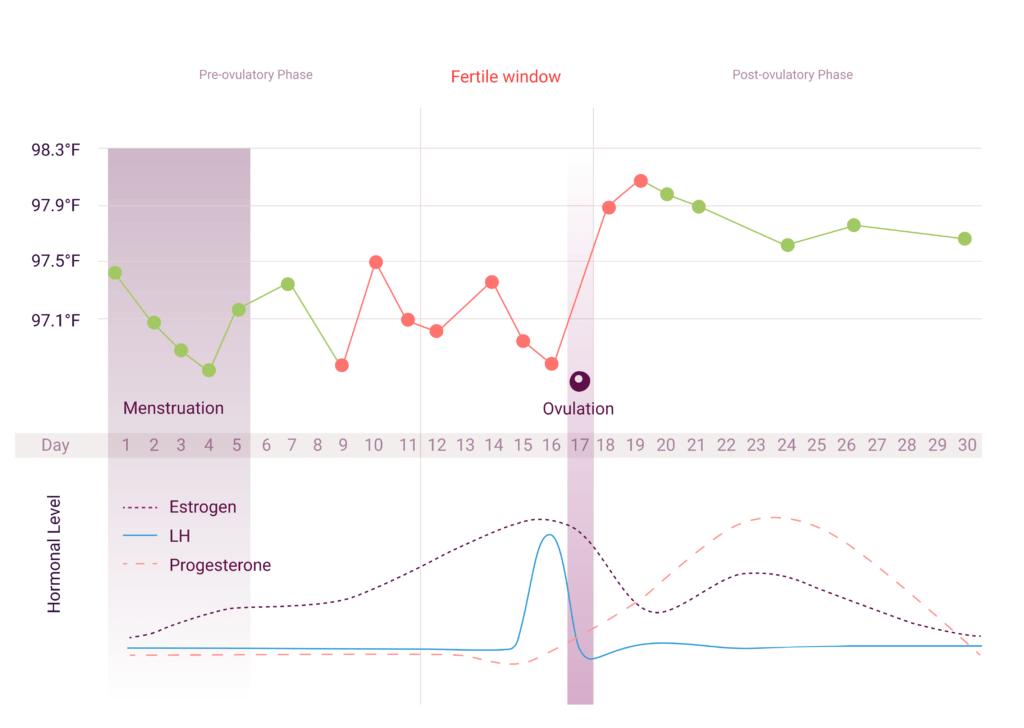Backgrounder
There is no “one size fits all” when it comes to birth control. Every woman is different, with different needs and priorities that can change over the course of her reproductive life. For women seeking effective, non-hormonal and non-invasive birth control, there are few options available. Natural Cycles may offer a new choice to meet their needs.
There is no “one size fits all” when it comes to contraception. Every woman is different, with different needs and priorities that can change over the course of her reproductive life.
Research has shown that women who use a method of birth control that doesn’t match their personal preferences may be less likely to use it properly, or to stick with it – which may increase the risk of an unintended pregnancy.1
This is why contraceptive choice is so important.
For women seeking effective, non-hormonal and non-invasive contraception, there are few options available. Natural Cycles may offer a new choice to meet their needs.
What Is Natural Cycles?
Natural Cycles is an effective2, natural method of birth control that is delivered in the form of an app.
It uses a smart algorithm that is sensitive to subtle patterns in a woman’s cycle to determine daily fertility, based on basal body temperature and period data.
How Does Natural Cycles Work?
The “brain” behind the app is a smart algorithm that can determine a woman’s daily fertility.
Detecting Ovulation
A woman may be fertile on six days of her monthly cycle: her ovulation day, and the five days leading up to ovulation (taking the possible length of sperm survival into account).
To use Natural Cycles, women take their temperature with a basal thermometer first thing in the morning and enter the reading into the app at least 5 times a week, as well as adding her period dates each month.
The Natural Cycles algorithm uses this information to predict the fertile window, thereby identifying green days, when no protection is needed, or red days, when women should use condoms or abstain from sex to prevent a pregnancy. It does this by analyzing changes in a woman’s basal body temperature, which increases after ovulation.
Intricate Design
The algorithm takes into account sperm survival, variation in cycle length, ovulation day, unusual temperature fluctuations and the length of the follicular and luteal phase.
It is sensitive to subtle patterns in a woman’s cycle: if it sees something unexpected (such as a higher or lower than expected temperature), it will err on the side of caution and give a red day.

Adapting to Every Woman’s Unique Cycle
The algorithm adapts to every woman‘s unique cycle pattern by learning over time as she adds more data, and gives more green days the more it gets to know her.
Before having unprotected sex, a woman must always check her fertility status for the day, including days when she might not enter any data. She needs to be aware that fertility predictions for upcoming days are only predictions and may change. If she is unsure of her fertility status for the day and can’t access the app or the web app, she must abstain or use protection.
Is Natural Cycles effective?
In one of the largest clinical studies of its kind, which included 22,785 women through 224,563 menstrual cycles across two years, the typical use effectiveness rate of Natural Cycles was 93%.2
Typical use effectiveness takes into account different reasons for becoming pregnant while using the app: from having unprotected sex on a red day, to the app wrongly attributing a green day or the chosen method of contraception on a red day having failed.
No method of contraception is 100% effective. Even if the app is used correctly, a woman can still have an unintended pregnancy.
Who May Natural Cycles Be Suitable For?
Using Natural Cycles does require a level of commitment. The better it suits a woman’s lifestyle, the more she will get out of it. Natural Cycles may be suitable for women who are looking for a natural method of birth control, are willing to use protection or abstain from sex on red days and have a lifestyle that enables them to take their temperature first thing most mornings.
Many Natural Cycles users have, for whatever reason, chosen to discontinue hormonal birth control – for example, if they are considering a pregnancy in the near future and wish to get to know their natural cycles. Many others were previously relying on less effective methods of contraception such as withdrawal or condoms.
Users of Natural Cycles are 30 years old on average.
References:
- Frost, J. J., & Darroch, J. E. (2008). Factors associated with contraceptive choice and inconsistent method use, United States, 2004. Perspectives on sexual and reproductive health, 40(2), 94-104..
- Berglund Scherwitzl E, Lundberg O, Kopp Kallner H, Gemzell Danielsson K, Trussell J, Scherwitzl R. Perfect-use and typical-use Pearl Index of a contraceptive mobile app. Contraception. 2017;96(6):420-425.